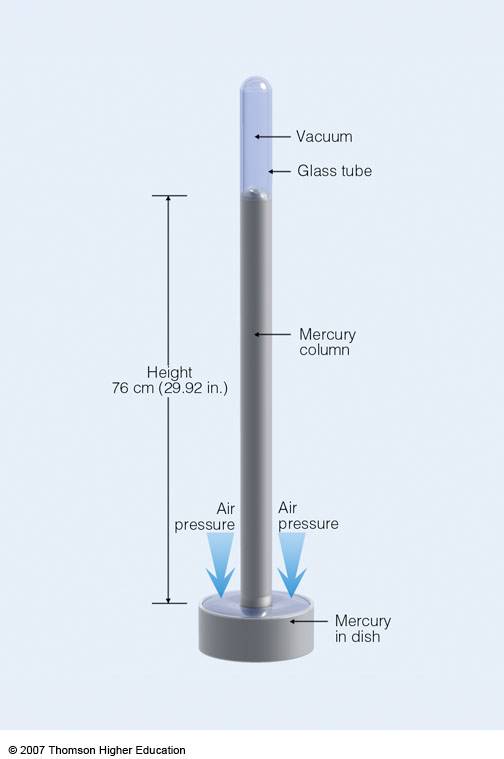1. Mercury Barometer
A mercury barometer consists of a thick-walled glass tube, which is closed at one end.

The tube is completely filled with mercury and inverted several times to remove air bubbles. The tube is then completely filled again with mercury.
After all air has been removed, the open end of the glass tube is inverted into a container of mercury.
The mercury column drops until it reaches a height about 76 cm above the lower surface. The space between the top of the mercury and the end of the tube should contain no air; it is a complete vacuum.
The column of mercury in the tube is supported by the atmospheric pressure and its height depends on the magnitude of the atmospheric pressure
2. Fortin Barometer
A fortin barometer is a type of mercury barometer which has a higher accuracy.
This barometer has a vernier scale which gives a more accurate reading of the atmospheric pressure. The mercury level in the container can be adjusted by a screw until the pointer touches the surface of the mercury. This eliminates the zero error.

The atmospheric pressure is measured in mm Hg.
3. Aneroid Barometer
An aneroid barometer does not use any liquid. It consists of a sealed metal chamber in the form of a flat cylinder with flexible walls. The chamber is partially evacuated and a spring helps prevent it from collapsing.
The chamber expands and contracts in response to changes in atmospheric pressure. The movement of the chamber walls is transmitted by a mechanical lever system which moves a pointer over a calibrated scale.

The Aneroid Barometer can be used a an altimeter (to determine altitude) by mountaineers or pilots to determine an airplane's altitude. The scale can be calibrated to give readings of altitude equivalent to a range of values of atmospheric pressure.
- an aneroid barometer is also used as a weather glass to forecast the weather.
Rain clouds form in large areas of lower pressure air, so a fall in the barometer reading often means that bad weather is coming.
1 comment:
Realy this is wonderful & marvelous website than other science
because this contains clear data.
Thank you
I wish you all the best......
Post a Comment